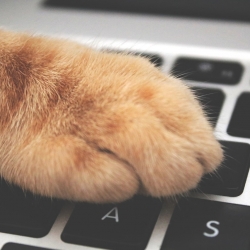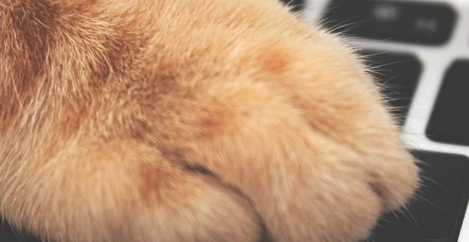April 20, 2020
How workers are adapting their homes into offices
 According to the results of a recent survey conducted by OnePoll on behalf of Citrix Systems, work has a completely new look as employees around the world adapt to the realities or working from home. Beds have become desks, bathrooms serve as conference rooms, kids and pets crash virtual meetings and cameras thought to be off capture awkward moments and sounds. Yet, workers remain as, if not more, productive and engaged.
According to the results of a recent survey conducted by OnePoll on behalf of Citrix Systems, work has a completely new look as employees around the world adapt to the realities or working from home. Beds have become desks, bathrooms serve as conference rooms, kids and pets crash virtual meetings and cameras thought to be off capture awkward moments and sounds. Yet, workers remain as, if not more, productive and engaged.
With their daily commutes reduced from hours to minutes, the majority of the 2,000 US workers who participated in the OnePoll research – comprised of office workers currently working from home due to the Coronavirus outbreak – are adapting their daily routines. While 24 percent get up at the same time as they did when commuting to an office, the vast majority say they are working around a new clock:
- 25 percent sleep in a little more
- 22 percent sleep until the last possible moment they need to be online
They’ve also adjusted their personal routines and spend less time getting ready for work:
- 34 percent shower every day
- 26 percent continue to do hair/makeup/other grooming
- 15 percent shave less
And 25 percent of respondents say they can focus and get work done more quickly as a result.
Few employees were ready for the abrupt shift to remote work that the coronavirus pandemic has forced. And while 82 percent of those who participated in the OnePoll survey said their companies were “completely” or “fairly ready” and had the technology and infrastructure in place to enable it on short notice, they cited a number of issues that make working from home tough:
- Strict security protocols and lack of single sign-on, requiring multiple passwords and two-factor authentication to access apps (33 percent)
- Slow home broadband/WiFi (33 percent)
- Lack of access to all the apps needed to get work done (23 percent)
- Slow Virtual Private Network (VPN) connection (16 percent)
Home comforts
When it comes to remote work, technology is only a piece of the work-from-home puzzle. And the OnePoll data shows employees are getting creative in doing so, as most are sharing space with others who have also been forced to work or learn from home, including:
- Partners (64 percent)
- Infants aged two and under (28 percent)
- Young children aged 3 to 12 (56 percent)
- Teenagers (13-17) (41 percent)
- Adult children (18 and over) (22 percent)
- Parents (23 percent)
- In-laws (19 percent)
- Elderly relatives (15 percent)
- Roommates (15 percent)
In addition, 14 percent of office workers reported temporarily working from their second/vacation home, 13 percent at their parents’ or in laws’ house and five percent are even sheltering in a hotel.
To accommodate the schedules of their new office-mates and minimise distractions, respondents to the OnePoll measure said they have taken calls in unusual places:
- Their bedroom (33 percent) or their child’s room (25 percent)
- Bathroom (29 percent)
- Garage (24 percent)
- Basement (23 percent)
- Closet (17 percent)
- Attic (15 percent)
- Outside (14 percent)
But this hasn’t prevented interruptions. Of those polled who said their children and pets have made appearances on video calls:
- Children (24 percent)
- Pets (13 percent)
- Both children and pets (29 percent)
Video life
The widespread use of online meetings can also lead to some awkward moments. Roughly 44 percent of workers have signed on to video meetings and not realized their cameras were on, only to be caught:
- Doing chores – cleaning, folding laundry, emptying the dishwasher, etc. (44 percent)
- In the bathroom (41 percent)
- Cooking (40 percent)
- Working out (38 percent)
- Eating (37 percent)
- Lying in bed or on the couch (33 percent)
Many have also experienced embarrassing moments thinking they were on mute when their microphones were actually on and they could be heard:
- Making awkward noises (41 percent)
- Talking about someone on the call (37 percent)
- Talking to someone else in the room with them (28 percent)
What does working from home look like?
- 29 percent of those polled wear slippers or no shoes
- 28 percent get dressed in the same attire they would wear to the office
- 25 percent wear sweatpants or pyjamas
- 25 percent get half-dressed so they can “look nice on video conferences”
- 24 percent wear workout clothes
And will it persist once the pandemic subsides?
- 37 percent of employees surveyed think their organisations will be more relaxed about working from home and 32 percent say they plan to do so more often
- 33 percent are eager to return to the office
- 28 percent indicated they will actively look for a new job that allows them to permanently work remote
Image by Aleksandar Cvetanovi?













